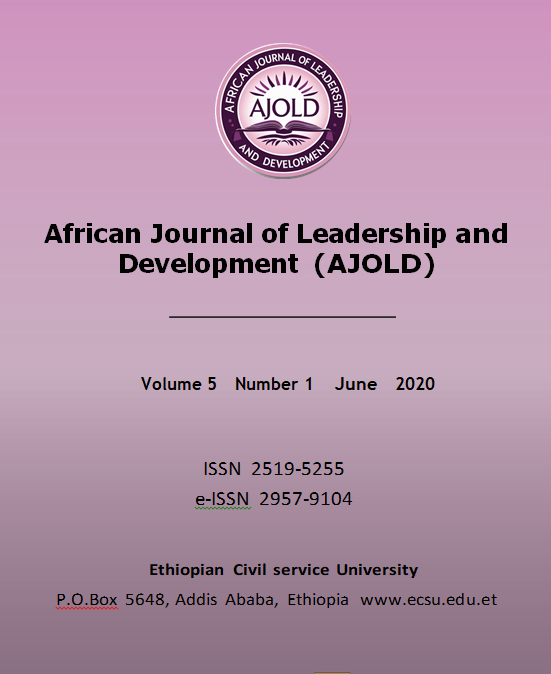Determinants of Urban Households Poverty in Major Cities of Ethiopia: (The case of Addis Ababa, Bahir Dar, Mekelle, Hawassa, Dire Dawa, and Adama)
DOI:
https://doi.org/10.63990/2020ajoldvol5iss1pp1-14Keywords:
Poverty, Poverty measures, Cost of Basic needs approach, Logistic regressionAbstract
This study assesses the determinants of urban household poverty in major cities of Ethiopia (in case of Addis Ababa, Dire Dawa, Hawassa, Bahir Dar, Adama and Mekelle). Based on the cost of basic needs approach; in 2004/05, 40.9% households in Addis Ababa, 32.4% households in Dire Dawa, 24.3% households in Adama ,27.5% households in Hawassa, 22.6% households in Bahir Dar, and 28.2% households in Mekelle were below poverty line. During 2010/11 survey Period, these figures were found to be 45.6%, 53%, 33.9%, 36.8%, 30% and 19.3% in case of Addis Ababa, Dire Dawa, Adama, Hawassa, Bahir Dar and Mekelle respectively. The result showed that head count index of poverty increases dramatically except Mekelle. Results based on logistic regression showed; household size was the only significant factor for households being poor in all cities in both survey periods. Educational level of households’ head was also significant on both survey periods in case of Addis Ababa, Hawassa, and Mekelle and it was significant in the first survey period in case of Adama and Bahir Dar. Whereas, educational level of households was not significant contribution on households being poor or not in case of Dire Dawa in both survey periods. Results based on primary data, lack of good governance and rural-urban migration took the lion share on aggravating poverty in these cities.
Downloads
Published
How to Cite
Issue
Section
License
This work is licensed under a Creative Commons Attribution-NonCommercial 4.0 International License






